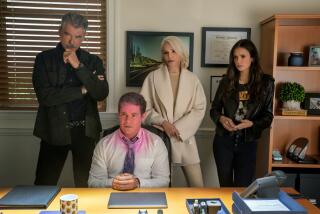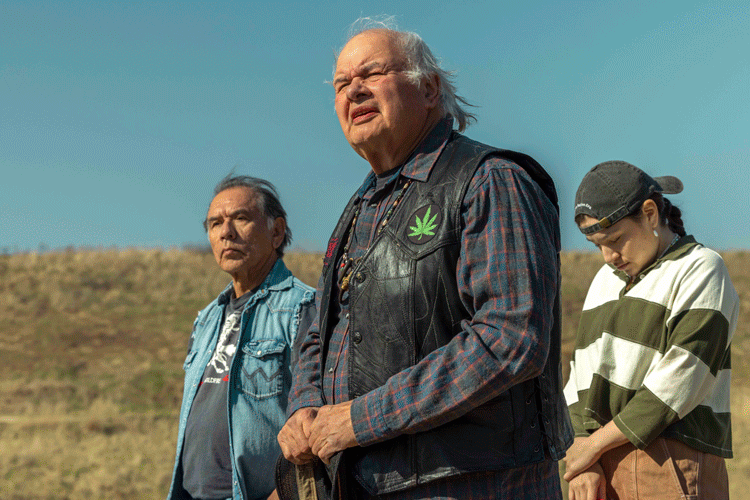An Original Writer Talks of Creating ‘Limits’
- Share via
From 1963 to ‘65, ABC presented the brilliant sci-fi anthology series “The Outer Limits.” Created and executive produced by the late Leslie Stevens, the hourlong series featured such up-and-coming actors as Martin Landau, Robert Culp and Robert Duvall, compelling story lines and complex aliens.
The Museum of Television & Radio’s William S. Paley Television Festival pays tribute to “The Outer Limits” on Friday evening and the public is invited. Included on the panel will be Joseph Stefano, who was the producer-writer on the series’ first and best season. Stefano is best known for writing the Alfred Hitchcock 1960 classic “Psycho.” He also wrote the screenplays for “The Naked Edge” and “Two Bits.”
Stefano talked about his encounters on “The Outer Limits.”
Question: What has “The Outer Limits” meant to your career?
Answer: That became the centerpiece of my career. I met more people because of it. I feel I communicated with more people than anything else I have done before or since.
Q: Did both you and [writing partner] Leslie Stevens come up with the idea for the series?
A: Leslie Stevens came up with it. He was doing a show for ABC and was doing another pilot. Then he came up with an idea for a sci-fi anthology. But they wouldn’t let him produce it because he was producing the other show. I had had some talks at ABC at that time about coming in and creating series. When they found out that Leslie and I had been friends for years, they agreed immediately to his notion [that I be the producer]. I was supposed to produce every episode and write four and I wound up writing 12. It was backbreaking work but I loved it. I had such great people--to be working with Conrad Hall as your cinematographer [who is Oscar-nominated for his work on “American Beauty”]. We had a lot of freedom. Much more than I think people have today.
Q: Do you think you were given that freedom because you could tackle all sorts of hotbed issues under the guise of sci-fi?
A: Oh, absolutely. It absolutely served that purpose. I was writing things that were anti-CIA. If I had gone to any network and said I have an idea for a show that is against the CIA, they would have thrown me out. Here we had monsters and alien beings that took the curse off of it.
We had just come out of a very strange dark period. The ‘50s as we look back on them now, we know the harm that was done and then a few of us sensed that something was wrong and we got to write shows about it.
The interesting thing is that the audience still got it. I received mail that was unbelievable from 12-year-old kids who knew what I was talking about.
Q: But didn’t you run into censorship problems with the classic episode in which Robert Culp played a particularly hideous alien?
A: In the first season there was one that Robert Culp did called “The Architects of Fear.” One town would not play it. It got a lot of publicity because they just said we are not going to show this episode. The monster was very scary and they were frightened and I can see how they might have been.
Q: Can you talk about the great Martin Landau installment in which he plays the ugly alien who becomes handsome on Earth?
A: That was called “Beauty and the Beast”! No. It was called “The Man Who Was Never Born.”
Q: It’s plot was very close to “The Terminator.”
A: Actually, “The Terminator” was taken from that. Anthony Lawrence wrote that. It was one of the most beautiful shows we did. I had a trick of saying “let’s do a haircut” on something, like let’s do a haircut on “Beauty and the Beast.” Shirley Knight was the young woman and this guy is an alien and he’s horrendous to look at, but every time the girl looks at him she sees this handsome man. Marty Landau loved that part because he got to be the terrible alien from the distant future and at the same time look very handsome and be loved.
BE THERE
“The Outer Limits” tribute takes place Friday at 7 p.m. at the Directors Guild of America, DGA Theatre Complex, 7920 Sunset Blvd. Admission is $13 for Museum of Television & Radio members, senior citizens and students with ID, and $15 for the general public. (310) 786-1016.
More to Read
The complete guide to home viewing
Get Screen Gab for everything about the TV shows and streaming movies everyone’s talking about.
You may occasionally receive promotional content from the Los Angeles Times.







